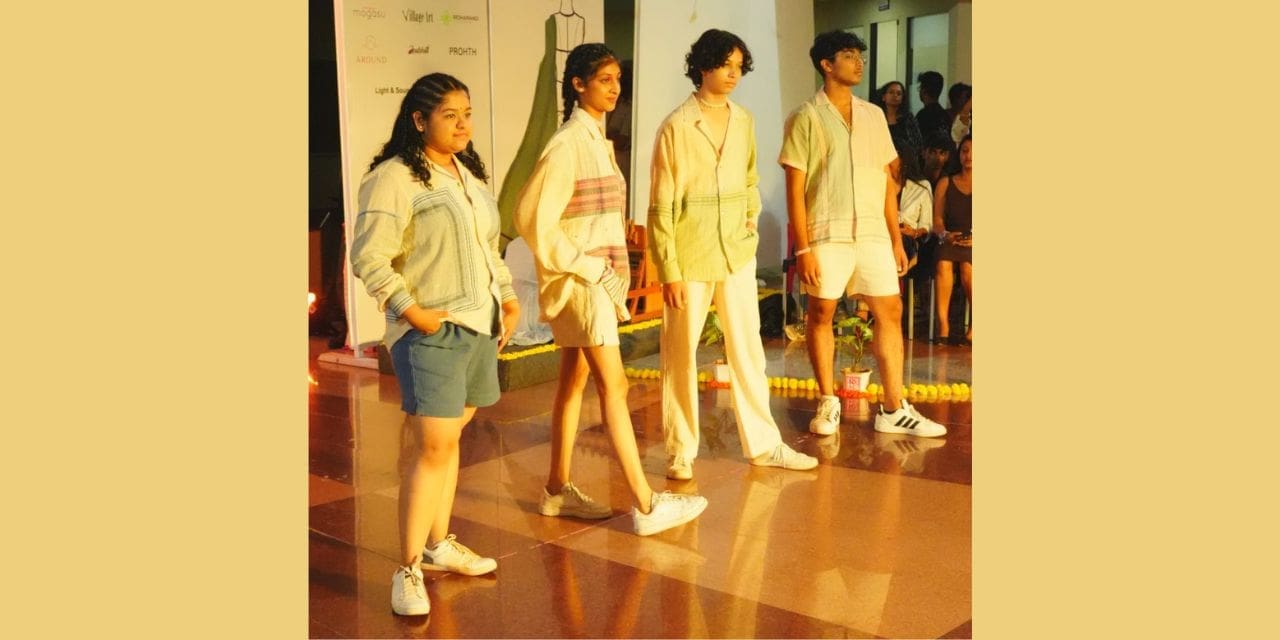Khadi is a story of how a seemingly simple cotton fabric wove us Indians together onto the path of independence and paved the way for the handloom industry of India. Once considered a sustenance fabric, Khadi has now become a symbol of opulence and luxury, echoing in the work of Indian designers as well as designers abroad. Khadi and handloom fabrics reflect our culture in more ways than one. These Reflections tie our nation together and are not restricted to time and neither trends.
On October 6th, NIFT Mumbai organized a fashion show to promote Khadi. Ms. Mehar Castelino, a Fashion Veteran, and Mr. Nelson Jaffery, Design Head of Birla Cellulose, did the inauguration of this program.” At this event, several designers made their contributions, such as Tejashri with Mogasu sarees, Prashansa for Reshamandi, Leena Das from Village Art, Aditya for Proth, Jinisha for the Around brand, and Anubhuti for Anubhuti Designs. Within the educational curriculum of NIFT Mumbai, students specializing in styling and heritage textiles creatively draped the garments provided by the designers stylishly and artistically, contributing to their creativity.
Additionally, students specializing in Craft-Based Product Design (CBPD) designed clothing that enhanced the show’s grandeur. Under the module of Craft-Based Product Development (CBPD), our students engage in dialogues and collaborate with various weavers from different handloom clusters in India, leading to the creation of beautiful designs. From music to modelling, everything was managed by the students of NIFT Mumbai’s Fashion Design department. The designing, planning, and design process were all undertaken by the students.
The entire perspective was first conceptualized, and everyone discussed and pondered over it. Plans were made for all the designs, and their blueprint was prepared. Then, each look was creatively brought to life through draping on paper. Subsequently, the draping on paper was translated into real-life creations. Techniques learned in their specialized subjects were put to good use by the students. By applying these skills, they not only contributed their creativity but also developed themselves as designers.
This event aimed to break the boundaries of Khadi, as today, renowned designers worldwide are giving Khadi a distinctive identity. Khadi, made from the spinning wheel, is recognised globally for its comfortable clothing and simplicity. The history of Khadi in Indian culture is illustrious, continues to be, and will always be.”
Applying these skills has helped them grow into their designer, with distinct aspects of their personalities pouring into the drapes.
Some expressions by students;
The first time I draped a saree, I caused a rip. A giant enough hole was caused by the brutality of a Safety Pin, which meant it was big enough for my mother to notice.
She instantly made me switch the saree, claiming the rip needed to be repaired; otherwise, the hole would get bigger and bigger.
As my mother taught me how to mend it, I wondered why The breaking of only a few threads warranted this switch, but What I tend to forget is the importance of each warp and each weft of a fabric, how I can
feel the shifting of each thread and hear them wrestle against each other.
It might seem small, but the interweaving of one such cotton thread created a ripple that reached the hearts of all Indians. A ripple that goes by the name of Khadi.
In 1920, our beloved Charkha gifted us self-reliance and self sufficiency. Today, we stand before you as we celebrate this symbol of resilience, unity, and independence that has woven itself into the very fabric of our nation -Khadi isn’t just a piece of cloth; it’s a symbol of our heritage and a testament to the indomitable spirit of our people.

